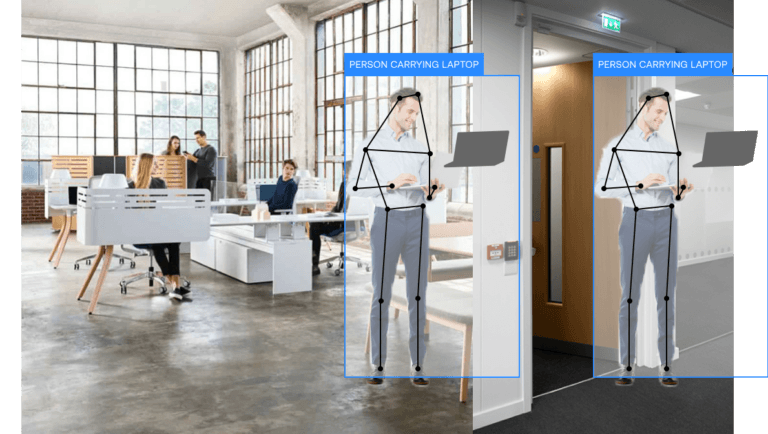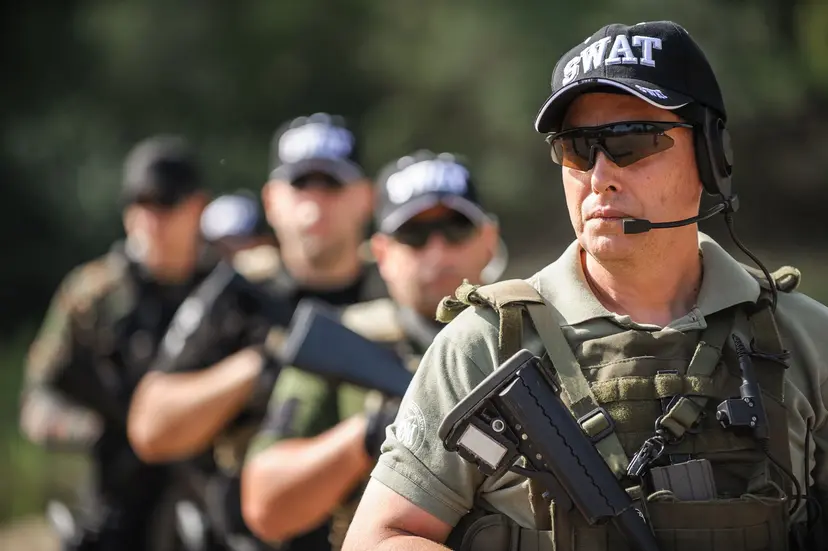What is Intelligent Video Analytics
Exploring how intelligent video analytics works, its range of benefits, how to choose the right solution, and more.
.webp)
Intelligent video analytics is a breakthrough technology that uses artificial intelligence (AI) and machine learning to extract meaningful insights from video footage.
Video analytics can help security operations centers (SOC) detect and track suspicious activity, improve an organization’s business intelligence, support smarter workplace decision-making, and other use cases.
In this article, we’ll answer the question, “What is intelligent video analytics?” by exploring how this technology works, its benefits, the different types, various requirements, and more.
Intelligent video analytics explained
Intelligent video analytics, or AI-powered video analytics, leverages AI and machine learning to analyze video footage and supply end users with key patterns and insights. This can be used for various purposes, such as:
- Physical security: Detect and track suspicious activity — such as loitering, tailgating, trespassing, and theft — before incidents escalate. Reduce false alarms by verifying threats.
- Workspace planning: Optimize workspace layouts and maximize usage by identifying areas of congestion, tracking occupancy, and assessing workplace utilization.
- **Business intelligence: ** Gain insights into business operations. For instance, monitor production lines in factories and improve traffic flow in parking lots.
- Traffic surveillance: Monitor traffic conditions and detect accidents. Gather information on the condition of roadways, congestion, and traffic flow.
As AI and machine learning evolve, video analytics is becoming increasingly sophisticated and capable of providing more accurate and actionable insights.
How AI video analytics works
Within the system, AI video analytics typically involves the following steps:
- Image capture: The first step is to capture video footage with the video camera infrastructure.
- Video encoding: The video footage is then encoded into a digital format that can be processed by AI algorithms.
- Feature extraction: The next step is to extract features from the video footage. Features are characteristics of the video footage that can be used to identify objects, people, and activities. For example, features can include the size and shape of objects, as well as the movement of people and vehicles.
- Object detection: Once the features have been extracted, AI algorithms are used to detect objects in the video footage.
- Event identification: After objects have been detected, AI identifies events in the video footage. Events can include fence jumping, trespassing, and theft.
- Actionable insights: The final step is to generate actionable insights and/or alerts from the video footage that the end users can use to create a response. These insights and alerts can be used to improve security, operations, and decision-making.
Evolution of intelligent video analytics in security
Thanks to the advancements in AI, video analytics has come a long way. AI-powered solutions, capable of analyzing a scene in the way that humans would, can now extend the capabilities of security and operations teams to achieve greater accuracy, efficiency, and responsiveness.
Motion video analytics
Motion detection enabled video analytics for the first time in the 2000s. These solutions triggered alarms based on simple if/then programmatic logic.
Unfortunately, relying on motion detection caused these systems to generate many false alarms and lack crucial security awareness. For physical security teams, security officers still carried the burden of investigating incidents on their own.
Deep learning video analytics
Introducing deep learning AI around a decade later enabled more complex, automated analysis based on models rather than programmatic logic.
Deep learning AI allowed video analytics to recognize different objects in a video and their attributes. The descriptions of this data, or metadata, could then be stored and used for more advanced use cases beyond simply triggering an alarm, including forensics and aggregated security reports.
Still, this technology struggled to distinguish between a genuine security threat and ambient activity.
Computer vision intelligence
Ushering in an era of truly intelligent security solutions, computer vision intelligence is miles ahead of traditional video analytics. Computer vision intelligence introduces the ability of computers to understand the context of a scene and the cues that humans recognize.
It uses the location, time of day, and interactions between objects to analyze security risks. With this real-time situational awareness and near-human level perception, computer vision intelligence automatically triggers action with heightened accuracy.

Benefits of intelligent video analytics
There is a multitude of benefits to using intelligent video analytics for security and workplace teams, including:
- Improved security posture: Move from reactive to proactive security. Detect early threats and prevent incidents from happening, and respond to incidents more quickly and effectively.
- Automated monitoring: Automate video surveillance monitoring and the verification of threats so that security personnel can spend more time focused on proactive security measures.
- Compliance & regulations: Some industries have specific regulations that require organizations to implement security measures, such as video monitoring. Intelligent video analytics can help organizations comply.
- Increased situational awareness: Detect threats in real time and identify current and past detections of a specific person or object instantly across video feeds.
- Reduced operational expenses: Cut down on operating expenses by automating security tasks and improving efficiency. Reduce the need for additional headcount and do more with less with automated threat detection, auto-acknowledgment of alarms, and faster forensic investigations.
- Informed decision-making: Gain deeper insights into operations. Understand where to optimize security measures and allocate additional resources, and reference data to maximize workplace usage.
Types of intelligent video analytics
Outside of the realm of security, there are many different types of intelligent video analytics, each with its own specific purpose:
- Automatic license plate recognition (ALPR): Identify vehicles by their license plates. ALPR systems are often used in law enforcement to track stolen vehicles and to identify suspects in crimes.
- Facial recognition: Identify people by their faces. Facial recognition systems are sometimes used in security to detect unauthorized access and to identify individuals of interest, though this and similar technologies come with their own privacy considerations.
- Crowd detection: Count people and track their movements. Crowd detection systems are often used in public safety applications to monitor large gatherings and to identify potential risks.
- People tracking: Track the movements of individual people. People tracking systems can be used in security applications to monitor suspects and to track the movements of employees in a workplace.
- Left and removed item detection: Detect when items have been left or removed from a location. Left and removed item detection systems are often used in retail stores to prevent theft and to improve inventory management.
- Motion tracking: Track the movement of objects in a scene.
- Object tracking: Track the movement of specific objects in a scene. Object tracking systems are often used in manufacturing applications to track the movement of products on a production line.
- People counting: Count the number of people in a scene. People counting systems are often used in retail stores to track foot traffic.
- Heat mapping: Visualize the movements of people or objects in a scene. Heat maps can be used to identify areas of high traffic or congestion.
- Scene analysis: Identify objects, people, and activities in a scene. Scene analysis systems can be used to detect suspicious activity, such as loitering or trespassing.
- Behavioral analytics: Analyze the behavior of people or objects in a scene. Behavioral analytics systems can be used to identify people of interest, such as missing persons or suspects in a crime.
Requirements your video analytics solution should fulfill
Not all video analytics platforms are equipped with the capabilities that you need to elevate your security program and gain the maximum ROI. Consider these requirements when vetting solutions:
- Ease of use: It’s important to invest in a solution that is designed with the end user in mind. Implementing and operating the system should be a light lift so that you can immediately reap the benefits.
- Integration with existing infrastructure: Ripping out and replacing systems is both time-consuming and expensive. Invest in a solution that easily works with the infrastructure that you already have in place.
- Scalability: Your video analytics solution should be able to scale to meet the needs of your organization as it grows. This means that the solution should be able to handle a growing number of cameras, a growing amount of data, and a growing number of users.
- Accuracy: The sophistication of your platform’s AI is key to ensuring complete accuracy in threat detection and verification. This will determine how many false alarms you receive, which can waste both time and resources and even lead to alarm fatigue. If your solution is not accurate, it may miss threats, leading to security incidents that could’ve been prevented.
- Security & privacy: Your video analytics solution should be secure and safeguard the privacy of your organization’s employees. The use of your information should be intelligent, not invasive.
- Customizability: You should be able to achieve a certain level of customizability so that you can tailor the platform to the specific needs of your organization, without overwhelming your end users. The solution should allow you to define rules and alerts, and to select the features that you want to use.
Ethics of AI video analytics
Consider the following to ensure that you use an ethical, secure AI solution:
- Identity protection: Opt for a solution that doesn’t collect personally identifiable information when monitoring surveillance feeds. You can further protect the identities of individuals with a platform that allows for facial blurring.
- Data privacy & control: Ideally, raw data should remain in your data centers and you should be able to access and delete any data that the platform has access to at any time. You should also be able to rectify and correct any inaccuracies in the data at any time.
- Data security: Your platform should have the necessary certifications to demonstrate a high level of information security in availability, processing integrity, confidentiality, and privacy controls.
Future of intelligent video analytics
The future of intelligent video analytics is bright. As AI and machine learning continue to evolve and grow progressively more advanced, video analytics will become even more powerful and accurate.
Looking ahead, you can expect AI-powered video analytics to function as the “brain” of your security environment. Future iterations are poised to become significantly smarter, more adaptable, and remarkably proactive in their functionalities.
Ethical considerations and privacy safeguards will remain at the forefront of their development, ensuring that technological advancement does not come at the cost of personal liberties or intrusions. The best video analytics solutions will balance these considerations with superior security and rapid response capabilities.
Go beyond traditional video analytics with Ambient.ai
Take video analytics to the next level with Ambient.ai’s computer vision intelligence platform. The Ambient.ai platform applies AI and computer vision intelligence to existing sensor and camera infrastructure to deliver continuous physical security monitoring and automate the immediate dispatch of human resources.
The system proactively alerts on real threats, 24x7x365, so your physical security team can prevent incidents before they happen. In short, we’re making the impossible possible for physical security teams.
**With Ambient.ai, our customers experience: **
90%+ reduction in access control alarms Real-time responses to incidents 20x faster forensic investigations
Explore the impact that Ambient.ai’s AI-powered physical security technology can have on your operations.



